Matador Network's Blog, page 829
June 30, 2020
Florida manatee deaths increasing
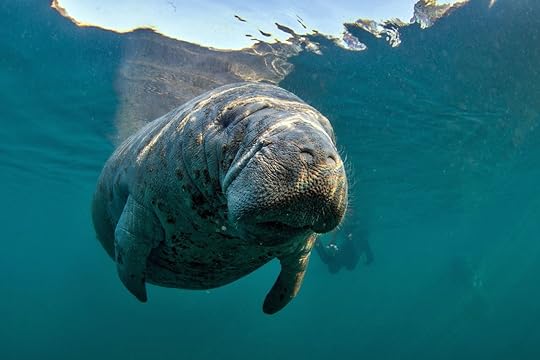
The silver lining of the global coronavirus lockdowns has been a sharp reduction in air pollution and carbon emissions, as well as more room to roam for some animals, but the pandemic hasn’t been a blessing for some wildlife. In Florida, the coronavirus has negatively impacted the safety of manatees. The pandemic has led to unsafe boating activity and caused delays to environmental projects — all of which endanger the manatees.
Patrick Rose, an aquatic biologist and executive director of the nonprofit Save the Manatee Club, said, “There are several troubling factors coming together during the pandemic. Manatees were already facing accelerated habitat loss, rising fatalities from boat collisions and less regulatory protection. With Covid, we’re seeing manatees at an increased risk, both from policies that undermine environmental standards and from irresponsible outdoor activity, such as boaters ignoring slow-speed zones.”
The Guardian reported that in May, a 1,600-pound pregnant manatee was hit by a speeding boater, and remains in critical care. In June, a manatee swimming off the coast of southwest Florida collided with a boat, resulting in a rib fracture. Boating activity increased in March when the lockdown went into effect, likely because it was one of the few activities deemed safe.
Between April and May, manatee deaths increased by 20 percent compared to last year, and June isn’t looking any better.
Mike Engiles, manager of the Crystal River Watersports ecotourism company, said, “Once Florida started to open up outdoor recreation in early May, people swarmed to the waterways. Unguided boaters and swimmers have had a detrimental effect on the environment. There’s an increase in trash. There are reports of destruction to the grass beds [manatees’ food source] from props and anchors.”
The pandemic has also caused delays in projects that would benefit the manatee environment, like breaching the Ocklawaha River dam. These delays, coupled with regulatory changes, put the manatee population at a particularly high risk during these turbulent times. 
More like thisWildlifeWhere to swim with the world’s most amazing marine wildlife
The post Florida manatee deaths rise by 20 percent during pandemic appeared first on Matador Network.

Trip ideas for summer 2020
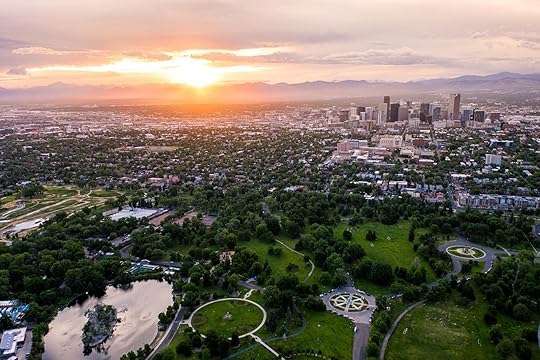
Travel ideas for your 2020 summer trip
Denver skyline from City Park. Photo: Nicholas Courtney/Shutterstock
You can’t take travel out of the traveler. Many of us have spent the last three months in some version of lockdown, feeling the urge to travel and explore. Now it’s summer — your summer — and you’re ready to make the most of it. But how do you do so responsibly? Plan to pack that mask and spend more time outdoors. Focus your trip on supporting the smaller, family-run businesses who truly need you.
And trust Southwest® to get you there. The airline has made a promise to support your comfort and well-being through practices such as cleaning between flights, enhanced overnight cleans, requiring customer-facing employees and passengers wear face coverings or masks (some exemptions apply), and keeping middle seats open through at least September 30. (Of course, you can still sit together. Southwest won’t be blocking seats or directing seating.) Not only that, but they’ve just rolled out some incredible low fares to unforgettable destinations around the country and are offering more points for booking flights and hotels.
Scope out the trip ideas below and check back in the coming weeks as we add more. Travel may look a bit different these days, but we should take time to get away and explore — and Southwest can help you summer how you wanna.
See the latest fare sales on Southwest.com

This post is proudly produced in partnership with Southwest Airlines.
Denver
Denver skyline
Rocky Mountain National Park
Larimer Square
A few hours by air from almost anywhere in the States, The Mile High City is a great choice for your summer 2020 trip. Life is lived outdoors here, and you’ll see why as soon as you step off the plane. The Front Range of the Rocky Mountains beckons in the distance, but make sure to devote ample time to exploring Denver’s outdoor art, eclectic food, and patio scenes as well.
You don’t have to take our word for it. “It’s time to trade isolation for a little vacation fun in Denver! Many of The Mile High City’s attractions have reopened, top restaurants are serving up healthy farm-to-table cuisine on expanded patios, and there’s plenty of room to reconnect with nature in the city’s surrounding wide-open spaces,” says Justin Bresler of VISIT DENVER.
If you’re looking for a quick trip to relax and reset, here’s an example of how a perfect day in Denver might look. Just remember that circumstances can change quickly these days, so it’s a good idea to double check operating hours and protocols for individual businesses before heading out.
Start with a morning refresh: Grab a to-go cold brew from Little Owl Coffee, and then head down the 16th St Mall to the flagpole outside Denver Union Station. There you’ll meet the folks at Denver Local Tours for a 90-minute private walking tour of LoDo, Denver’s oldest neighborhood. Don’t forget to wear your mask.
Get out of town: The craggy peaks of Rocky Mountain National Park are 90 minutes away. Plan ahead and reserve a timed entry permit — the park is currently operating at 60% capacity — for an afternoon hike in the Beaver Meadows area or a scenic drive along Trail Ridge Road.
Fill up with fresh take-out eats: Though many restaurants throughout Denver have opened their dining rooms, take-out means a fresh-air picnic wherever you want to wander. It also means a chance to support local: Ethiopian cuisine has been a fixture of Denver’s dining scene for 20 years, most restaurants family-owned and operated. Scout out Konjo Ethiopian or The Ethiopian Restaurant for an earthy, spicy, crowd-pleasing meal.
Toast sunset with a patio cocktail: It’s impossible to choose, but wine slushies at Acova or a fresh pint at the wide-open Lowry Beer Garden certainly make the list. When in doubt, head to Larimer Square for a smorgasbord of open-air patios to choose from. Just because it’s happy hour doesn’t mean you have to go indoors — especially in Denver.
For more trip ideas and to stay abreast of the latest restrictions and closures, seek out the experts at VISIT DENVER.
Visit Southwest for great deals on flights to Denver
.map * {
font-family: sans-serif !important;
}
.info-window-link {
display: block;
margin-top: 10px;
padding: 3px 10px;
border-radius: 3px;
background-color: #0099ff;
color: white !important;
font-size: 12px;
text-align: center;
}
.info-window-link:hover {
text-decoration: none;
}
', { style: 'max-width:150px' });
$('').append(marker.title).appendTo(info);
if (marker.scroll_to) {
$('', {
class: 'info-window-link',
href: '#' marker.scroll_to,
}).append('Jump To').appendTo(info);
}
infoWindow.setContent(info[0].outerHTML);
infoWindow.open(map, target);
};
$('#' id).on('click', '.info-window-link', function(e) {
e.preventDefault();
var target = $(e.target).attr('href');
$('html, body').animate({ scrollTop: $(target).offset().top - 55 }, 1000);
});
for (var i = 0; i < markers.length; i ) {
var marker = markers[i];
if (marker.lat !== undefined && marker.lng !== undefined) {
var markerObject = {
map: map,
position: { lat: parseFloat(marker.lat), lng: parseFloat(marker.lng) },
animation: google.maps.Animation.DROP,
locationId: i,
}
if(atts.ordered !== undefined) {
markerObject.label = labels[labelIndex % labels.length];
}
if(marker.icon !== undefined) {
markerObject.icon = marker.icon;
}
var mapMarker = new google.maps.Marker(markerObject);
if (mapBounds) mapBounds.extend(mapMarker.getPosition());
if (marker.title) {
var infowindow = new google.maps.InfoWindow({ content: marker.title });
if (markers.length === 1) {
setTimeout(function() {
openInfoWindow(marker, mapMarker);
}, 1200);
}
google.maps.event.addListener(mapMarker, 'click', function() {
openInfoWindow(markers[this.locationId], this);
});
}
}
}
if (mapBounds) {
map.fitBounds(mapBounds, {top:boundPadding, right:boundPadding, left:boundPadding, bottom:boundPadding});
} else if (atts.zoom) {
map.setZoom(parseInt(atts.zoom));
} else {
map.setZoom(16);
}
});
});
Photo credits: Brian Lewis, bjul/Shutterstock

This post is proudly produced in partnership with Southwest Airlines.
The post Travel ideas for your 2020 summer trip appeared first on Matador Network.

June 29, 2020
America’s public bathrooms
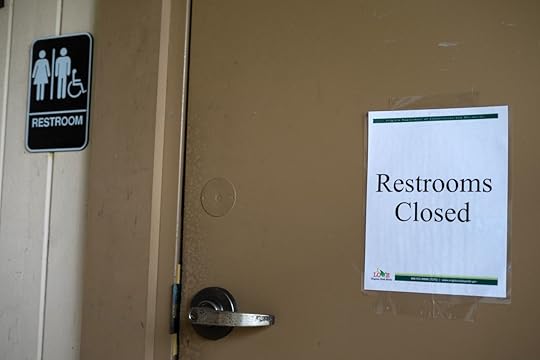
Outdoor seating at restaurants and bars used to be a treat. Now, eating and drinking outside is just about the only way to stay (relatively) safe.
There’s just one major problem: Restaurant and bar bathrooms are all still inside.
Restaurants and bars across the United States have moved dining tables to the streets and parking lots. Cocktails and beer are now sold to-go, and sipping your drink while walking is about as common for some as bellying up to the bar once was. But stay outside long enough — especially after a few drinks — and you’re bound to need to pee. In New York City, so many people were peeing on the streets in recent weeks that the New York Post rechristened the Big Apple “the Big Toilet.” Roadtrippers who could once rely on pit stops at fast-food restaurants are finding limited toilets or outright closures.
America, frankly, is not designed for people who need to pee.
Restroom access has long been a problem in the US. A lack of publicly maintained restrooms means that ubiquitous businesses like Starbucks are the toilet gatekeepers. This has led to some blatant examples of discrimination. Public restrooms aren’t enjoyable and can be costly to make and maintain, but they are necessary — especially when road trips are the safest way to travel and outside is the only place to go. That’s never been more clear than during a global pandemic that shut down the private businesses people were previously forced to rely on.
The US has tried to solve the problem in the past. An article by Peter Baldwin in the Journal of Social History highlights how the years between 1869 and 1932 were boom times for public bathrooms. The country was still figuring out where it stood on government responsibility versus what private businesses should provide. The government at the time believed its duty was to “protect privacy, encourage personal care, and hence refine the inner character of the citizen,” Baldwin writes, and cities built “comfort stations” near public squares. Privately owned businesses, in contrast, exploited people’s bathroom needs to draw people in for a sale.
The public lost. Department stores and hotels provided affluent shoppers with fancier, more private bathrooms. Those who couldn’t afford to shop were left out. You can draw a direct line from the classist choices of a century ago to today. In New York City, the only reliable place to find a bathroom in normal times is at a bar, since anywhere that sells alcohol must also have a bathroom. Toilet-finding apps like Flush were once indispensable for travelers looking for businesses with bathrooms. Now we’re left with few private options and even fewer public ones.

Photo: Wut_Moppie/Shutterstock
Other countries like the Netherlands, Germany, and France have found solutions. France’s history with public restrooms is longer than the US’s history without them. Paris built public urinals in the early 19th century called colonnes vespasiennes. They weren’t perfect (traditional urinals are only useful for about half of the population), but they did reduce the amount of piss flowing on the streets. Today, people in French cities have the option of open-air urinals called pissoirs and full, self-cleaning public restroom stalls called sanisettes. The latter have a locked door and can be used for up to 15 minutes, and many are free to use in Paris.
These restroom options aren’t exactly comfortable for people used to the privacy of a restaurant or bar bathroom. Yet when drinking outside is part of the culture, the public options are a relief. I found this true firsthand last summer while drinking wine and eating bread on the side of Canal Saint-Martin in the 10th arrondissement. Nothing will make you rethink your aversion to public toilets like a full bladder.
Drinking outside has become a forced part of American culture too now that it’s the only option. Yet we lack the infrastructure to make this a sanitary activity.
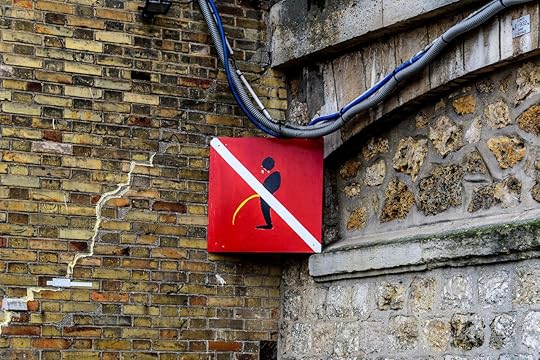
Photo: Zenith Pictures/Shutterstock
People are going to have to pee. There’s no getting around that. Without public restrooms or open businesses, people are confined to a small radius around their home if they want to avoid peeing in public (and risk getting fined, or worse). This is an extra burden on the homeless and people with medical conditions.
It doesn’t have to be this way. The lack of public toilets is one of the many issues that the coronavirus has shined a bright light on. It shouldn’t be something that returns to the old normal. Still, the chances of local governments in the US funding public bathrooms are low, whether that be male urinals, female urinals like the Lapee, or self-cleaning private bathrooms like those in France.
As we road trip around the country and sip on our to-go drinks around town, it’s worth thinking about how the country could be a cleaner, more equitable place with more public restroom options. The smell of urine baking in the summer sun is reason enough to dream of better days. Until then, people away from their homes in the US are left holding it. 
More like thisFood + DrinkThe TSA has a new rule for snacks in carry-ons. Here’s why.
The post COVID-19 has exposed America’s public bathroom problem appeared first on Matador Network.

Alternate ways to road trip in CA
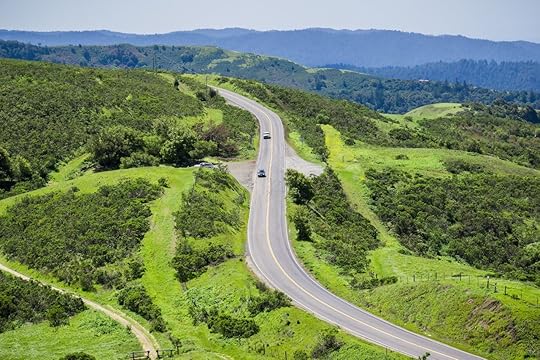
Road trips have never been more appealing, offering the liberating feeling of open space while keeping us far from crowds. Once you’ve checked California’s famed Highway 1 off your bucket list, there are plenty of other intriguing ways to traverse the Golden State.
Below, we’ll dive deep into three: The first passes wildlife refuges, skirts a national park, and offers quirky mementos of state history. The second skims the state’s much-less-traveled eastern boundary, taking you to the state’s two weirdest lakes and introducing you to Gold Rush lore. And, finally, in Northern California, roll down the windows and tour wine country, hippie towns, and one of the windiest, redwood-flanked roads we could find.
Mapping your journey
We’ve got some trips outlined below, but know that you can create your own road trip as well. The easiest way to do this is to choose your Point A and Point B on Google Maps and then select the option to “avoid highways.” Your projected drive time will quite possibly double, but remember: It’s not about getting to the destination. It’s about the journey.
More than one route is likely to pop up, so your decision after that will include some research on cool things along the way. Add those as stops, breaking the Google Maps itinerary into segments, to make sure the route hits the key spots you want to see. To make this all a bit easier, here are three sample itineraries for an unusual tour of California.
LA to SF on entirely different roads
For most people, there are four ways to work your way up from Los Angeles to San Francisco: famed Highway 1, Highway 101, or the multi-lane interstates that cut across the massive San Joaquin Valley, I-5 or I-99. Those last two are soulless slogs across flatness, made bearable only with a great playlist.
If you like driving country roads for the sake of driving — as does my brother, who’s done some variation of this route in both a 1973 Lincoln Continental and a 1968 black Cadillac — and don’t mind doubling the time it will take you to cross the state, consider this deep dive into the Golden State.

Photo: newsshooterguy/Shutterstock
The Rose Bowl and JPL — From downtown LA, take N. Verdugo Road to La Cañada. You’ll pass close to the Rose Bowl in Pasadena, and you’ll skirt alongside NASA’s Jet Propulsion Laboratory. You can tour the Rose Bowl, with its original 1922 locker room, starting at $17.50/adult; JPL tours are free although they require a three-week advanced booking. Before you head out, stop for coffee at Flintridge Bookstore.
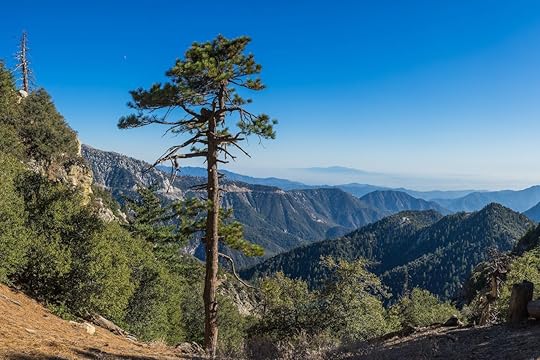
Photo: kenkistler/Shutterstock
Angeles National Forest — From La Cañada, take Angeles Crest Highway north and up, way up, past switchbacks and into Angeles National Forest, 700,000 acres of chaparral and pine and fir that top out 10,000 feet. Before you get that high, you’ll turn onto N3 towards Hidden Springs, where you’ll also find a campground.
Bitter Creek National Wildlife Refuge — You’ll connect onto Route 138 toward the Bitter Creek National Wildlife Refuge, home to Bitter Creek Canyon and a sanctuary for California condors. Bobcat, tule elk, and even mountain lions have been spotted here as well.
West Kern Oil Museum — Just north on 33, in Taft, you’ll find the West Kern Oil Museum. Maintained by volunteers, the museum contains old oil wells, antique cars, and other fun relics. It’s a tribute to California’s little-known oil history. In the early 1900s, together with Texas and Oklahoma, California was one of the country’s biggest oil producers.
Tumbleweeds — From Taft on Highways 33 and 46 you’ll pass through a flat, arid landscape — a tumbleweed or two perhaps blocking your way. An hour later you’ll arrive in Shandon, though you’ll wonder what on Earth a Hollywood icon was doing there in the first place.
James Dean Memorial — Here in Shandon is the James Dean Memorial, not far from the James Dean Memorial Junction at the intersection of Highways 46 and 41, where the actor had his fatal crash in 1955. The metal sculpture was made in Japan in 1977 to honor the actor.
Central California Wine Country — Now you’ll be headed north on two-lane roads through oak-dotted hills. In winter, the grassy hillsides won’t be a bright green; more likely you’ll find them the golden color that reflects the state’s name. You’re in the Central California wine country here, passing Parkfield Winery, Franciscan Estates, and Bear Valley Vineyards to name a few.

Photo: Sean Veale
Highway 25 — In another hour and a half from Shandon, you’ll hit Highway 25, which gets even windier and hillier. You’ll pass farms, ranches, and more stately oak trees, some hundreds of years old.

Photo: randy andy/Shutterstock
Pinnacles National Park — This park is home to condors soaring above the twisted rock spires that give the park its name. Hikes take you through talus caves, made by fallen rocks centuries ago and now home to several bat colonies. Two miles southeast on 146 will get you to the Pinnacles Visitors Center and another three will take you to the Bear Gulch Day Use Area, a jumping off point for several great hikes.
Gilroy — From here you’ll connect through Gilroy, better known to Bay Area residents for its fruit outlets and for its ubiquitous smell of garlic. Gilroy is the garlic capital of the world, hosting an annual garlic festival in July for 40 years running. (2020 will be the exception.)
Los Gatos — From Gilroy you cross through Los Gatos and Saratoga, some of the priciest towns in the Bay Area, where the homes of Silicon Valley tech billionaires hide behind mammoth hedges.

Photo: Sundry Photography/Shutterstock
Skyline Boulevard — Now you’ll head up into the Santa Cruz Mountains, where the landscape changes significantly. In addition to several species of oak, you’ll find Douglas fir and redwood trees here. You’re on Skyline Boulevard now, a roadway worthy of the name.
Alice’s Restaurant — Named for the Arlo Guthrie song, the restaurant “amid the redwoods” always has a collection of Harley Davidsons parked out front. On weekends, techies from the valley park their multi-thousand-dollar bicycles there in a break from their ride through the hills.
Lake Merced — Take Skyline Boulevard down towards the city of San Francisco. Your first sighting in the city will be peaceful Lake Merced, alongside Ocean Beach.
The eastern route: lakes, national parks, and the California Gold Rush
Most people never see the sliver of California that lies on the far side of the Sierra Nevada range. This routing takes you there — punctuated by the two most unusual lakes in California — but then cuts back west to take you through some of the state’s Gold Rush history. This drive is a long one, nearing 1,000 miles, so you can always opt to do only a portion of the drive. The whole stretch is for the person who truly loves to drive, like my brother, who drove here all the way to Oregon in a blue 1972 Mercedes.
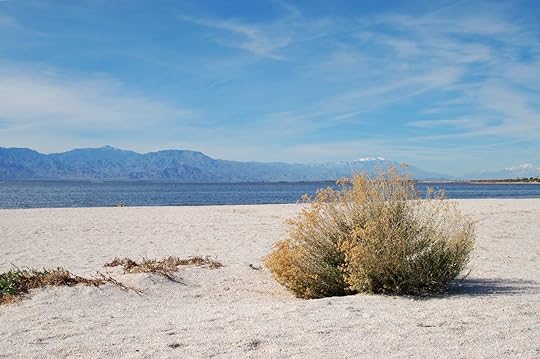
Photo: Lowe Llaguno/Shutterstock
Salton Sea — Drive from El Centro to the Salton Sea, which was created after a Colorado River dam overflowed in 1905. Today, the Salton Sea is one of the world’s largest inland seas, lying at 227 feet below sea level and measuring 45 miles long.
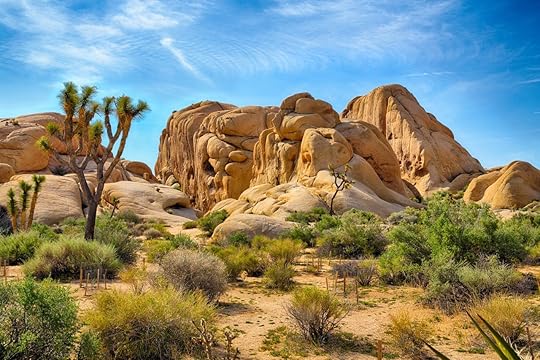
Photo: Gary C. Tognoni/Shutterstock
Joshua Tree National Park — One of the most unique parks in our country’s public lands treasure trove, Joshua Tree is named after its unusual, alien-esque trees, which are actually a member of the agave family.
Barstow — Once a mining town in the 1800s, today Barstow is home to several small museums, among them the Mojave River Valley Museums, the Western America Railroad Museum, and the Route 66 Museum.
I-395 North — You are on the highway here, but it’s one that doesn’t get much traffic. Heading north along the eastern side of the Sierra Nevada range, this stretch is home to the tallest peaks in the lower 48, many topping 14,000 feet. Depending on the time of year, the mountains will be capped in snow, a stark contrast to the high desert landscape you’ll be driving through, passing shrubs and sparsely populated towns with names like Independence and Bishop.
While you’ll have the one-million-acre Sequoia National Forest to your left, as you head north and into Inyo National Forest, the landscape gets even more interesting. (To visit Sequoia and Kings Canyon National Parks, you’d have to take an alternate route, since the entrance to them is only from the west.)
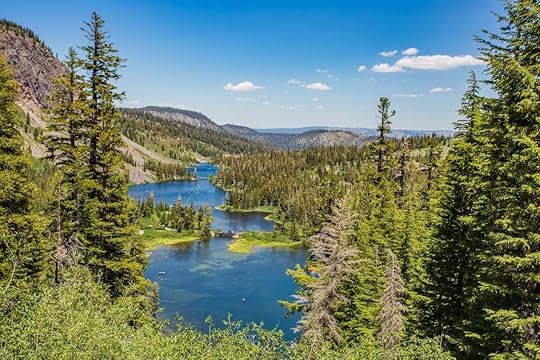
Photo: Oleg Bakhirev/Shutterstock
Mammoth Lakes — Mammoth Mountain is known as a ski resort, but in summer the area’s alpine lakes set against a stunning mountain backdrop are a great place to kayak, stand-up paddle, or just take some photos for the ‘gram on your way northward.
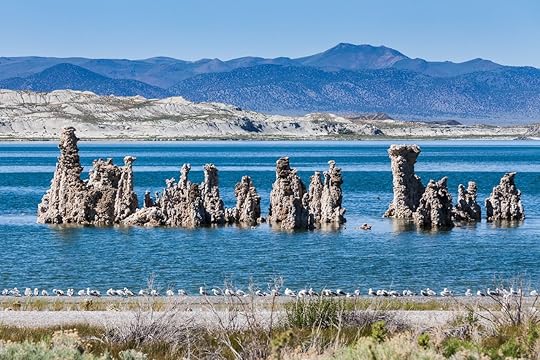
Photo: Oscity/Shutterstock
Mono Lake — Mono Lake is a sink lake with no inlets or outlets, created quite possibly by a volcanic eruption over 750,000 years ago and maintained by run-off from the Sierra Nevada range. It has weird limestone towers and columns known as tufa, and its extremely high saline levels support unusual brine shrimp and the millions of migratory birds that feed on them.

Photo: Pung/Shutterstock
Yosemite National Park — If it’s not the winter months, you can actually enter California’s most famous national park through its much less-used eastern gate. The entrance is 11 miles up Tioga Road from 1-395. If you want to take a detour, it’s a stunning drive up the backside of this mighty mountain range, past two piercingly blue lakes, towards the sub-alpine Tuolumne Meadows area of Yosemite.
Stanislaus National Forest — When you hit Fales Hot Springs at over 7,000 feet, turn west onto 108 and drive through the Stanislaus National Forest. You’re entering Gold Rush country here.
Sonora — Here, you’ll find the Tuolumne County Museum in a former jailhouse. You could detour north to Columbia State Historic Park, which is a preserved town from the Gold Rush days. Then you’ll head north on Highway 49, named for the 1849 Gold Rush that turned San Francisco from a town into a major city — and that forever changed the state of California.
Angels Camp and Mark Twain — Just beyond Sonora up Highway 49 is Angels Camp, where — if you happen to be there in May — you might catch a frog-jumping event in honor of Mark Twain’s first short story, “The Celebrated Jumping Frog of Calaveras County.” The story, which won Twain literary acclaim, is based on a story he heard in an Angels Camp bar when he lived there hoping to find gold.
Gold Rush Country — In Placerville, tour a gold mine that dates to 1888. Further on, Grass Valley has its own historic gold mine, Empire Mine, and the North Star Mining Museum. If you’re there in March, you can watch the St. Piran’s Day events, which commemorate the miners from Cornwall who settled here over 150 years ago.

Photo: Sean Veale
Doyle — The only reason to pop over to Doyle is to see a tree full of shoes — and maybe to add a shoe or two onto the tree yourself. And then to snap a picture of your car by the tree. But that sounds like reason enough.
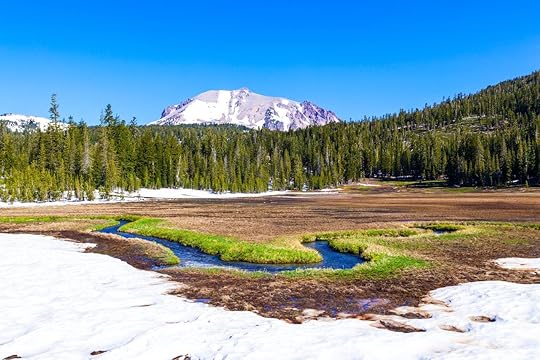
Photo: travelview/Shutterstock
Lassen Volcanic National Park — After you’ve traveled 18 hours and seen a shoe tree, do you really need anything else? Well, head a bit further on to be wowed by the geysers, lava rocks, and forested alpine peaks of Lassen National Park. It’s the ultimate reward after an unusual drive up the little-known roads of this well-known state.
Sonoma County: the Bohemian Highway, vineyards, and a crazy route to the coast
Once you head north of San Francisco, you’re still 370 miles from Oregon, which is to say that there’s a whole lot of land up there and not a lot of people. Get off the major highways, and you’ll ride the narrow, winding roads flanked by farms, vineyards, or forests. And you don’t need to go too far north to find them. This particular road trip starts just 40 miles north of SF, takes you through Sonoma County, and showcases the best of Northern California: wine country, hippie towns, and the sea — all the while keeping the roads lush and wooded. This drive takes three-and-a-half hours, but you can break it up with strolls or meals in picturesque Sonoma towns.
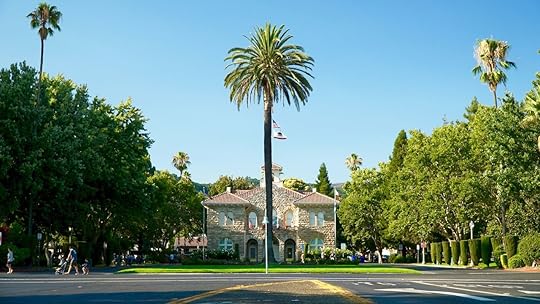
Photo: Colin Braaten/Shutterstock
Sonoma — This photogenic town in the heart of Sonoma wine country is best known for its large, tree-dotted plaza surrounded by restaurants and shops. Grab a coffee at the Basque Boulangerie Cafe to get ready for your drive.
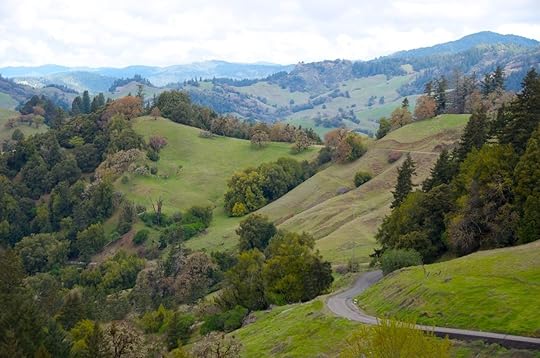
Photo: Candia Baxter/Shutterstock
Glen Ellen — Glen Ellen feels so hidden away in the wooded hillsides that it feels like a place you’d never pass by if you weren’t specifically trying to get there.
Sebastopol — The road to Sepastapol takes you past picturesque, almost-European-looking barns and apple orchards. It’s one of the most scenic drives in the area.
Freestone — This is your first stop on the Bohemian Highway, named for the Bohemian Club, an all-male club that was founded by artists and journalists in 1872. (Nowadays that same club still meets, but it’s more a reflection of SF old money.) The counterculture vibe that inspired the Bohemian Club lives on in the hippie towns along this 10-mile stretch. You’ll pass redwoods, vineyards, organic farms, and plenty of funky houses.
Occidental — This impossibly charming town tucked amidst the redwoods is a great place to stop, especially for lunch at the Union Hotel Restaurant. Or pick up a coffee and scones (regular or gluten-free) at Wild Flour Bread and save lunch for Healdsburg.

Photo: Alexandra Latypova/Shutterstock
Healdsburg — Work your way past the vineyards on Westside Rd. until you get to Healdsburg, its own wine country town with a much smaller plaza and a more intimate feel than Sonoma. Have lunch at The Shed, or pick up a fantastic cup of caffeine at Flying Goat Coffee.
West Dry Creek Road — This narrow road hugging one side of a hill takes you from one winery to another. You could take it all the way to Bella Winery to check out its cave and pick up some bottles of Zinfandel and then double back to Skaggs Spring Road.
Skaggs Spring Road — Now you get to enjoy, or gasp at, one of the many east-west roads that runs across the northern half of the state, each one seemingly narrower and twistier than the one before it. This is truly a road for someone who loves to drive. You’ll wend from one blind turn to another, passing redwoods, crossing rivers, and spotting deer on the side of the road. It feels more like a hiking trail than an automotive road, so roll down the windows and enjoy the forest air.

Photo: Radoslaw Lecyk/Shutterstock
Stewarts Point — You’ve reached the stunning, rugged coastline of Sonoma County. Bays, bluffs, and inlets make up the area. You can hike just up north in Sea Ranch or at Salt Point State Park due south. Or head down south to Jenner, turn back eastward, and take Route 116 back through the forests and farmlands to Sebastopol. 
More like thisCampingCamping your way up California’s Highway 1
The post Road-tripping on California lanes you’ve never heard of appeared first on Matador Network.

NASA launches space toilet contest

You might have some DIY skills but may not be confident enough to put those skills to work for NASA. Well, NASA is soliciting ideas from the general public for a new space product — but it’s probably not what you’d expect. The US is preparing to launch astronauts to the moon in 2024, and NASA wants to make the journey as comfortable as possible. That means upgrading the bathroom situation, which hasn’t got a makeover in quite some time.
Previously, astronauts used diapers, holes in the wall, and advanced funnel systems. In the International Space Station, astronauts still bag their poop. As you can imagine, those options are less than appealing.
Mike Interbartolo, part of NASA’s lunar lander engineering team, told Business Insider, “We need a toilet that needs to work for seven days on the surface of the moon, as well as during that transit time to and from the moon.”

Photo: Herox
The space agency is launching a Lunar Loo contest, crowdsourcing ideas for improving the astronauts’ bathroom experience, and the winner gets $20,000. The toilet design must function both in the microgravity of space and lunar gravity, and be usable for all astronauts regardless of gender.
You’d think that rocket scientists would be able to design a toilet, but apparently the task is more complicated than it appears.
According to Interbartolo, “We want that different perspective over the next couple months of this challenge to really kind of open our eyes to the unknown unknowns that, since we’re so tightly focused on what a space toilet is, maybe there are different things that we’re not aware of out there.”
The complete guidelines for the contest are available on HeroX. The deadline to submit designs is August 17 at 5:00 PM ET. First place will be awarded $20,000, second place $10,000, and third place $5,000. 
More like thisNewsThis balloon-spaceship combo may soon bring tourists to the edge of space
The post NASA will pay $20,000 to anyone who can design a revolutionary space toilet appeared first on Matador Network.

US vanlife destinations
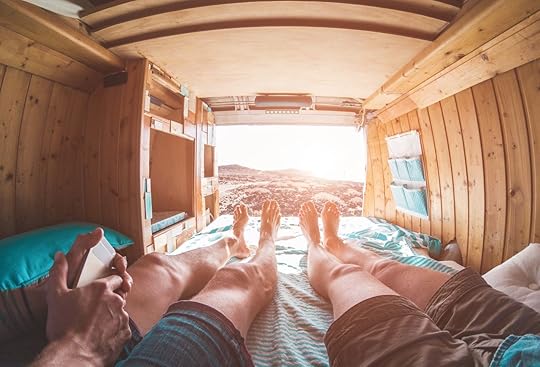
Vanlife is no longer for the nomadic one percent, creative 20-somethings handy enough to skirt outrageous rental prices and Airbnb costs. 2020 has taken this niche market into the mainstream: Van rental companies — the decked-out, traveling kind — are popping up all over, appealing to both locals and tourists alike as a second epidemic strikes: cabin fever.
“We’ve seen customers flip from 50/50 locals vs. tourists to 95 percent locals trying to get out of town,” notes Scott Kubly, CEO and founder of the Seattle-based Cabana. “Not only are people in the area using Cabana as a unique weekend getaway, but people are using our vans as remote offices so they can work from anywhere.”
But is it truly that much different than RVing?
Well, yes. “RVs are much larger and built for people to own and travel or live in. [Our] vans are smaller, easier to drive, and they provide all the space and comfort you need for a weekend getaway. They blend into the background so you feel more closely connected to the landscape,” Kubly explains. (Not to mention built-in WiFi.)
Cabana’s just one of the nation’s many vanlife start-ups. Find the one nearest you, and with a minimal learning curve, you could nab your first taste of this enviable lifestyle this weekend. Here’s where you could go.
1. Mesa County, Colorado

Photo: Zack Frank/Shutterstock
Home to the quirky communities of Fruita and Palisade, the city of Grand Junction, Colorado National Monument, McInnis Canyons National Conservation Area, Dominguez-Escalante National Conservation Area, the Colorado River, and Grand Mesa National Forest, let’s just say there are a few things you can do outdoors — and a few views you can take in — in Colorado’s Mesa County.
Red rock mesas light up this place — hence the name — but you’ll also find hoodoos, canyons, aspen groves, arches, turquoise lakes, and even one delightful dinosaur museum. It’s even home to the Grand Mesa, the world’s largest flat-topped mountain. Much of the county is BLM land (meaning your wild camping options are many), but there are plenty of designated campgrounds and RV resorts like Basecamp in Palisade for when you need an amenity-filled day — and a shower.
2. Mt. Washington Valley, New Hampshire

Photo: Andy Shih/Shutterstock
The tallest peak in the Northeast, Mount Washington (6,288 feet) is the centerpiece of the White Mountain National Forest. Grab a spot at one of 10 campgrounds or primitive camp and spend your days hiking, biking, rock-climbing, or waiting for moose to cross your path. The 3,000-acre Moore Reservoir is good for a paddle, too.
The nearby town of North Conway, NH, is a total adventure town, with the kind of booming apres-ski scene you’d expect up here in the mountains. Get there on the 100-mile White Mountains Trail, one of the few designated scenic byway loops in the country.
3. Tybee Island, Georgia
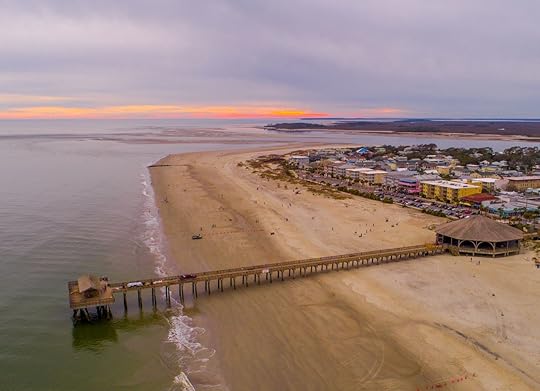
Photo: SFP Aerial Stock Footage/Shutterstock
Tybee Island, a barrier island near Savannah known for its surprisingly wide beaches, has been a Georgian go-to spot for centuries. There are four main stretches of sand, but Back River Beach is where to go to avoid the crowds; you can also go backcountry at Little Tybee Island, an uninhabited nature preserve only accessible by watercraft. Several local outfitters rent out canoes, kayaks, and boats, and you can camp out here and make a weekend of it, too.
If you’re looking to stick with your van, though, grand live oaks surround River’s End Campground & RV Park, and here you’ll be just minutes from the 1800s lighthouse, several beaches (be sure to shell in the morning), and the island’s best shops and restaurants.
4. Stanley and Snake River Valley, Idaho
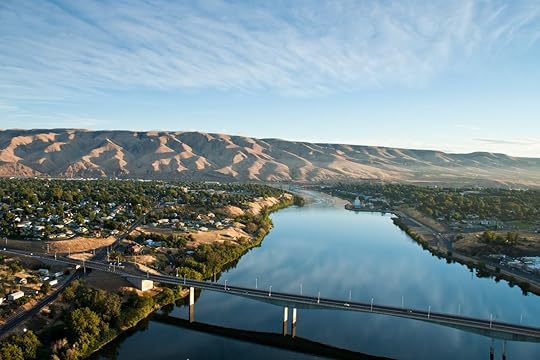
Photo: Wollertz/Shutterstock
Gnomad Home’s John Serbell, a dedicated vanlifer, considers Idaho one of the best states in the US for free or cheap camping. “They make life very easy for vanlifers by having dump stations and drinking-water fills in almost every town.” And Stanley, a funky mountain town smack dab in Idaho’s mountainous center, sits high on the state’s proverbial top shelf.
Put yourself here, and you’ll be neck-craning the whole way as you take an impossibly scenic drive along the gorgeous Snake River. You’ll be right between the picturesque Sawtooths and the Salmon-Challis National Forest, both with endless options for wild camping or designated camping, whichever’s your style. The Frank Church River of No Return Wilderness — one of the most remote stretches of land in the Lower 48 — is minutes away, too. The beauty here is on par with the country’s most scenic national parks (without the crowds).
Note: If renting a van makes you want to convert one yourself, definitely check out Gnomad Home’s epic how-to on building your own van.
5. Bishop, California
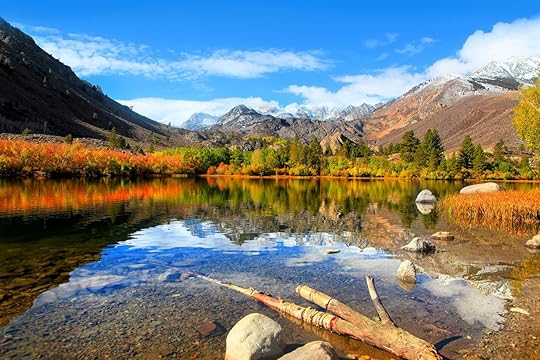
Photo: SNEHIT PHOTO/Shutterstock
One of the larger towns in the famed “Range of Light,” Bishop is known for a strange trio: its scenery, its bakeries, and its mules. Sitting at the northern end of the Sierras in Owens Valley, it has one of the highest concentrations of rock-climbing routes in the country and endless opportunities for hiking, camping, and biking.
The Sierra National Forest and the Inyo National Forest sit just to Bishop’s east (where you could wild camp), Yosemite and Kings Canyon national parks are just a hop away, and the brilliant Mono Lake and Mammoth Lakes should make your list, too. With such a stellar location, it’s clear why both the folks at The Discovery Nut and Gnomad Home rank Bishop top-tier on their destination lists.
6. Huntington Beach State Park, South Carolina
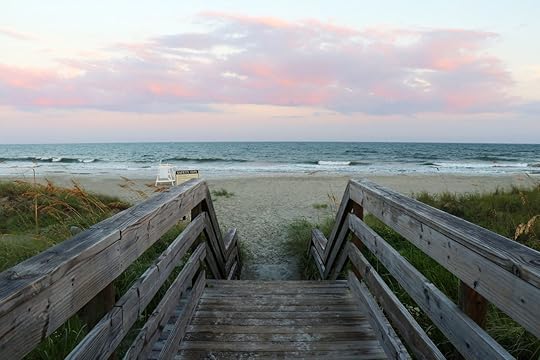
Photo: MarynaG/Shutterstock
A castle on a beach? Yes, you can have that experience — even in the States. South Carolina’s Huntington Beach State Park is home to the Atalaya Castle (or simply Atalaya), a National Historic Landmark done in Moorish Revival style. The state park also has a three-mile beach on the Atlantic, a freshwater lake, hiking trails, and plenty of opportunities to spot loggerhead turtles and watch for migrating birds. If you tire of your own cooking, the nearby Marshwalk has plenty of wonderful seafood restaurants and local options right on the water for fresh, al fresco dining.
7. Sauk County, Wisconsin
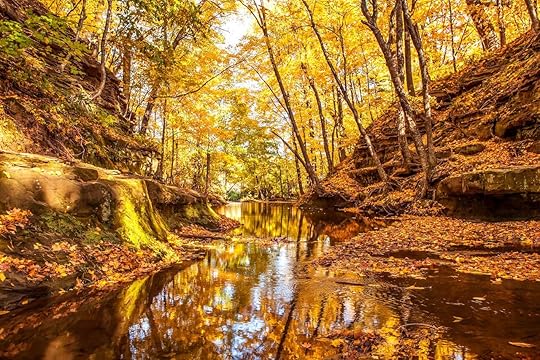
Photo: Suzanne Tucker/Shutterstock
Wisconsin’s outdoor spaces are seriously underrated — the state has 16 million acres of forested land. And though the Chequamegon National Forest and the Apostle Islands are proof how stunning the northern portion of the state is, don’t write off Sauk County, about an hour away from Madison.
Its pièce de résistance is Devil’s Lake State Park — which has plenty of camping opportunities alongside its towering bluffs and cliffside hikes — but the Wisconsin Dells, Parfrey’s Glen, Pewit’s Nest, Gibraltar Rock, Fern Dell Gorge, and several outstanding sections of the Ice Age Trail are also in the area, each home to some fabulous rock formations, trails, and glacially-carved views. Lake Wisconsin, just a few miles away, also remains from the area’s icy past.
Beyond the state park, there are numerous places to “pull over,” but Crystal Lake Campground and RV Park in Lodi covers all your necessary amenities away from Devil’s Lake’s weekend crowds.
8. Mt. Hood National Forest, Oregon

Photo: Josemaria Toscano/Shutterstock
Mt. Hood National Forest is one of the country’s most popular. The area sees some four million visitors every year — but since you can easily wild camp in your van, you don’t have to see any of them. As long as you’re 200 feet from any water source, road, or trail, the forest is all yours. Spend your time floating or paddling the Clackamas River — a tributary of the Willamette — hike the final section of the Oregon Trail, snow-tube down Mt. Hood, or mountain bike through the groves of Douglas fir and red cedar.
Of course, you could always stay at the Mt. Hood RV Resort as well (depending on your set-up, you may be looking for a dump station). The views from here, with your van doors open, are hard to believe.
9. Seward, Alaska

Photo: ThinkingAhead/Shutterstock
There is no wrong way to live your best #vanlife in Alaska. But since we have to narrow it down, let’s go with Seward: It’s the gateway to Kenai Fjords National Park, where great views are had just filling up at the gas station. Get yourself anywhere on the Kenai Peninsula, and you’ll see just how many options you have — and how many places you might yell out, “Pull over!”
In Seward, the avid camping community behind The Dyrt recommends Miller’s Landing: It’s a family-run campground just 2.5 miles south of town, and regular sea kayaking trips depart from here, giving you as much time on the water as you please. But don’t stick around too long: You’ve got more to see — and four wheels to do it. 
More like thisCampingRVs are the way to travel this summer. Here’s where to hit the road.
The post 9 epic places in the US to visit on your first #vanlife trip appeared first on Matador Network.

The world's spiciest dishes

A dash of spice on your favorite dish can burn your tongue and leave you begging for a glass of water. And yet we keep coming back to peppery hot dishes topped with chilies and spiced with cayenne — no matter how much sweating they cause. The suffering is worth it; even the spiciest dishes on the planet are rich and complex and in flavor, each one providing a tantalizing and unexpected eating experience.
People around the world relish spiciness, adding blistering heaps of seasoning to everything from stews to curries to seafood. From South America to Southeast Asia, spice rules beloved dishes. A soup made with fish bladders and potatoes doused in scorching cheese sauce are just the beginning. The heat can be hard to take, but worth it. Here are 10 of the spiciest dishes on the planet any chili devotee needs to try.
1. Jjambbong

Photo: guardian_s/Shutterstock
Chinese immigrants who settled in Incheon, Korea, created jjambbong in the 1800s. This spicy Korean noodle soup brings the fire. It’s loaded with seafood like squid and mussels, pork, heaps of noodles, and carrots, zucchini, and cabbage. The red broth is flavored with kelp and gochugaru, Korean chili powder made with sun-dried Korean red chili peppers that imbue the dish with a sweet and smokey spiciness.
Red hot spice is king in Korean cuisine: Other dishes like nakji bokkeum (spicy stir fried octopus) and dakbokkeumtang (spicy braised chicken breasts) are also slathered in gochugaru, as well as gochujang, Korean red pepper paste.
2. Phaal curry

Photo: Monkey Business Images/Shutterstock
Like many curries people eat outside of India, phaal first emerged in England, specifically in the Bangladeshi-owned restaurants of Birmingham. Considered even spicier than the iconic vindaloo curry (which gets its kick from green chilies, chili powder, garlic, and paprika), phaal takes heat to the next level by adding either habanero or scotch bonnet peppers to the tomato-based sauce. Some daring home cooks have even made phaal curry with ghost peppers, which are about 400 times hotter than Tabasco but have a distinct fruity and sweet flavor — if you can get past the heat. One New York City restaurant describes phaal curry like this: “excruciatingly hot curry, more pain and sweat than flavor.”
3. Camarones a la Diabla
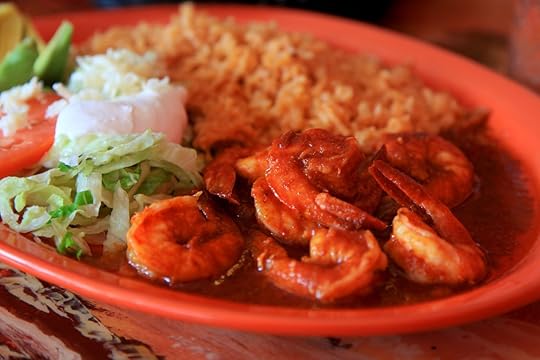
Photo: SNEHIT PHOTO/Shutterstock
In this Mexican dish, juicy shrimp get a spicy upgrade courtesy of a thick sauce made from dried guajillo and arbol chiles. Though this is simple in execution, there are many different versions that pop up at Tex-Mex restaurants, including versions doused in barbecue sauce or habanero salsa, or topped with chipotle peppers.
4. Chilate de pollo
This braised chicken stew is simple but packs a punch. The bright red broth gets its spicy flavor from dried guajillo chiles and chiles de arbol, but the key ingredient might be epazote, a pungent herb with the flavor of licorice. Thankfully, the stew’s tomato base helps temper the heat from chilies. Chilate de pollo likely originated in Oaxaca, which is known for its dark red, smoky pasilla chilies.
5. Otak-otak

Photo: Faiz Dila/Shutterstock
This spicy fish cake is a mainstay of the cuisine of the Peranakan people, who are Chinese immigrants who settled in Singapore and Indonesia. At the foundation of this dish is rempah, a spice paste made from a combination of red chilies, garlic, shallot, ginger, lemongrass, and turmeric. A white fish, like mackerel, is blended with the rempah and coconut milk to create a smooth paste (sometimes called a fish custard). This is formed into rectangles and wrapped in banana leaves. Then, the whole thing is grilled over an open charcoal fire to impart the fish with a smokey flavor.
6. Papa a la huancaina

Photo: EDP Photography/Shutterstock
At first glance, you wouldn’t think this Peruvian dish, which is served cold, is spicy. But the main feature of papa a la huancaina is its signature yellow sauce, and it will set your tongue on fire. This potato dish, which comes from the Huancayo region of Peru, is topped with a cheese sauce made from two key ingredients: aji amarillo chile peppers and queso fresco. According to legend, the dish was originally conceived to feed railway workers. The creamy, spicy sauce is so popular that it’s used as a dip for everything from fried yuca to quail eggs.
Chili-infused dishes are so popular in Peru that one saying goes, “El gringo que come ají, no se mueve de aquí,” which means, “The foreigner that eats hot peppers will never leave Peru.”
7. Sichuan hot pot

Photo: Tonywang86/Shutterstock
The best way to describe Sichuan hot pot? Fiery. Hot pot works like this: Bowls of deep, red, steaming, bubbling broth infused with whole dried Sichuan red chiles and peppercorns are heated by a hot plate. Raw dishes from tofu, to thin slices of beef, to vegetables like bean sprouts and bok choy are brought out to accompany the soupy mixture. Hot pot is a communal, self-service meal, and diners are required to dunk their sides of choice into the broth until each one is cooked through.
This is the type of heat that will make your eyes water, your mouth burn, and your forehead sweat, but it’s well worth fighting through the pain. If you need more evidence that Sichuan hot pot is the apex of spicy cuisine the world over, just watch Anthony Bourdain force his friend, French chef Eric Ripert, to eat so much of it he nearly passes out.
Gan guo is the “dry pot” version — a “numbing” mix of stir-fried spicy vegetables flavored with peppercorns and chili flakes — without the soup base.
8. Griot
For this Haitian dish, succulent chunks of pork are marinated in a mixture of orange, lemon, and lime juices along with Scotch bonnet chilies. Pork griot is all about acid and tang. Once the pork is finished cooking, it’s served alongside pikliz, a Haitian vegetable relish. The spicy-tart flavor is a favorite in Haiti, where it’s served in just about every household, at both casual occasions and formal events. In a story for Gusto magazine, one Djanan Kernizan wrote that griot means “family, home, and ethnic roots” for Haitian people.
9. Doro wat

Photo: MagicBones/Shutterstock
The secret ingredient in this iconic slow-cooked Ethiopian stew is debere, a fiery hot spice blend made by combining dried red chilies, paprika, cayenne pepper, fenugreek, and other spices. Niter kibbeh, Ethiopian clarified butter spiced with garlic and other herbs, adds another dimension of spice. A cup of t’ej — Ethiopian honey wine — is often added to the marinade to add a touch of sweetness. The tender, juicy chunks of chicken, which are simmered in heaps of caramelized onions, are served alongside spongy injera and boiled eggs. Doro wat is often reserved for special occasions, like holidays or when relatives come to visit.
10. Gaeng Tai Pla
This Thai dish, a cross between a curry and a thick soup, is as pungent as it is spicy. Beloved by the fishing communities of southern Thailand, its foundation is tai pla, a salty sauce made from pickled fish bladder and other intestines. Dried chilies, garlic, galangal, shrimp paste, and turmeric among other spices give this spicy, tangy broth depth and tang. Chunks of dried fish meat are sometimes combined with hearty vegetables like eggplant, bamboo shoots, and long beans to ease some of the spice in this dish, but in its original home, the city Nakhon Si Thammarat in the north of Thailand, nothing is added to the dish to cut its heat. 
More like thisFood + Drink22 of the world’s hottest peppers (and where to eat them)
The post 10 of the spiciest, tongue-numbing dishes from around the world appeared first on Matador Network.

Broadway will remain closed til 2021

With a return to normal unlikely before the end of the year, Broadway has announced that all programming will be canceled through January 3, 2021. In May, the Broadway League had already announced that shows would be suspended through September, so this latest development isn’t a complete surprise.
Even when Broadway does resume its shows, it probably won’t see a full production slate right away, but a gradual lifting of the curtain on a rolling basis.
Broadway performances in New York City will be suspended through the remainder of 2020 due to COVID-19. Tickets for early 2021 will go on sale in the coming weeks. #BroadwayWillBeBackhttps://t.co/tBhNtuaYNN pic.twitter.com/GKCXF1umqw
— The Broadway League (@BroadwayLeague) June 29, 2020
Charlotte St. Martin, president of the Broadway League, said in a statement, “We are determined to bring back the people who rely on this industry for their livelihood, and to welcome back all those who love this vital part of New York City, as soon as it is safe to do so. As so many of us in the Broadway community have been saying during this time: We’ll be back, and we have so many more stories to tell.”
Theaters will refund or exchange tickets purchased for shows through January 3, while tickets for winter and spring performances are expected to go on sale in the coming weeks.
To prepare for Broadway’s reopening, multiple task forces have formed to figure out how patrons and staff can safely return to the theater. In-theater screening, testing, and sanitation protocols, and the like are being considered, but no definitive plans have been put in place.
Broadway performances shuttered on March 12, 2020. 
More like thisLGBTQ TravelThe Broadway shows you need to see in NYC: LGBTQ edition
The post Broadway will remain closed until 2021 appeared first on Matador Network.

Mississippi state flag redesign

As Confederate monuments are taken down all across the country, Mississippi’s state flag will also be getting a long overdue makeover. The flag, which features the Confederate battle emblem, is the last state flag in the country with Confederate symbology, and its days are numbered. On Sunday, the Mississippi state House and Senate just voted to remove the current flag and design a new one that does not include the Confederate symbol.
The flag must be removed within 15 days of the vote and a commission has been created to design a new flag that will not feature the Confederate emblem. The new flag must include the words “In God We Trust.”
The flag was initially designed in 1894 by white supremacists in the Mississippi legislature. In 2000, the Mississippi Supreme Court ruled that the flag lacked official status, but voters chose to keep the design during a 2001 flag election.
A new design will be put on the ballot on November 3. If the majority of voters approve the design, it will become the state flag. If the majority reject the design, a new commission will be created to think of a new design. 
More like thisCultureThe 9 coolest flags in the world and the meanings behind them
The post Mississippi finally drops Confederate emblem from its flag appeared first on Matador Network.

Liquid waste dumping in Russian town

The Arctic tundra of northern Russia has had a rough go as of late. Less than a month after a massive oil spill outside the town of Norilsk, the same Russian mining company has suspended workers at a metal plant who were caught dumping wastewater into the nearby Arctic tundra. While no injuries have been reported, the incident could prove devastating to the natural habitat surrounding the Siberian town of Norilsk, about 1,788 miles northeast of Moscow.
According to a report in The Guardian, about 212,000 cubic feet of wastewater from a reservoir was dumped into surrounding trees, with the full reach of the dump and the extent of the damage not yet known. Emergency services did say, however, that the wastewater was unlikely to reach the nearby Kharayelakh River.
The company, Norilsk Nickel, called the incident a “flagrant violation of operating rules.” Russia’s natural resources agency noted that recent heavy rains and tests had caused water levels at the reservoir to rise dramatically and that the decision was made to pump some of the liquid out of the reservoir to avoid overflowing.
ВАЖНО: «Норникель» прямо сейчас сливает производственные отходы в озеро Пясино. Видео от 28 июня:https://t.co/13iJfwgUPS pic.twitter.com/yKfFEcWHFi
— Новая Газета (@novaya_gazeta) June 28, 2020
After local police began receiving reports of unauthorized dumping, an inquiry was opened. Novaya Gazeta reported that large metal pipes pumping liquid from the nearly-overflowing reservoir dumped the wastewater into the tundra, and then removed the pipes when investigators arrived to analyze the incident. 
More like thisSustainabilityAn initiative to protect 30 percent of the earth by 2030 could be massive for outdoor spaces in the US
The post Russian mining company pumps wastewater into Arctic tundra appeared first on Matador Network.

Matador Network's Blog
- Matador Network's profile
- 6 followers



